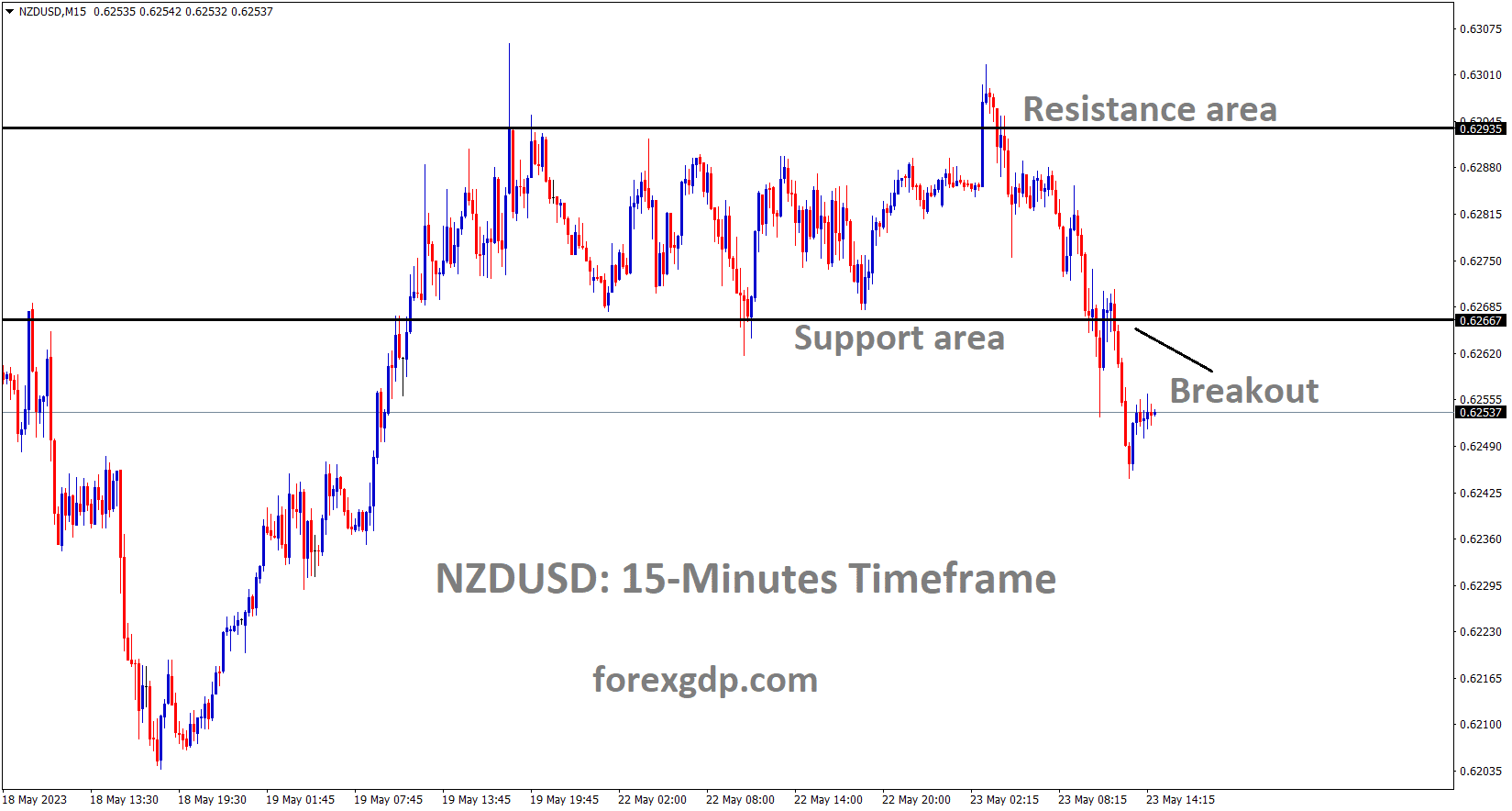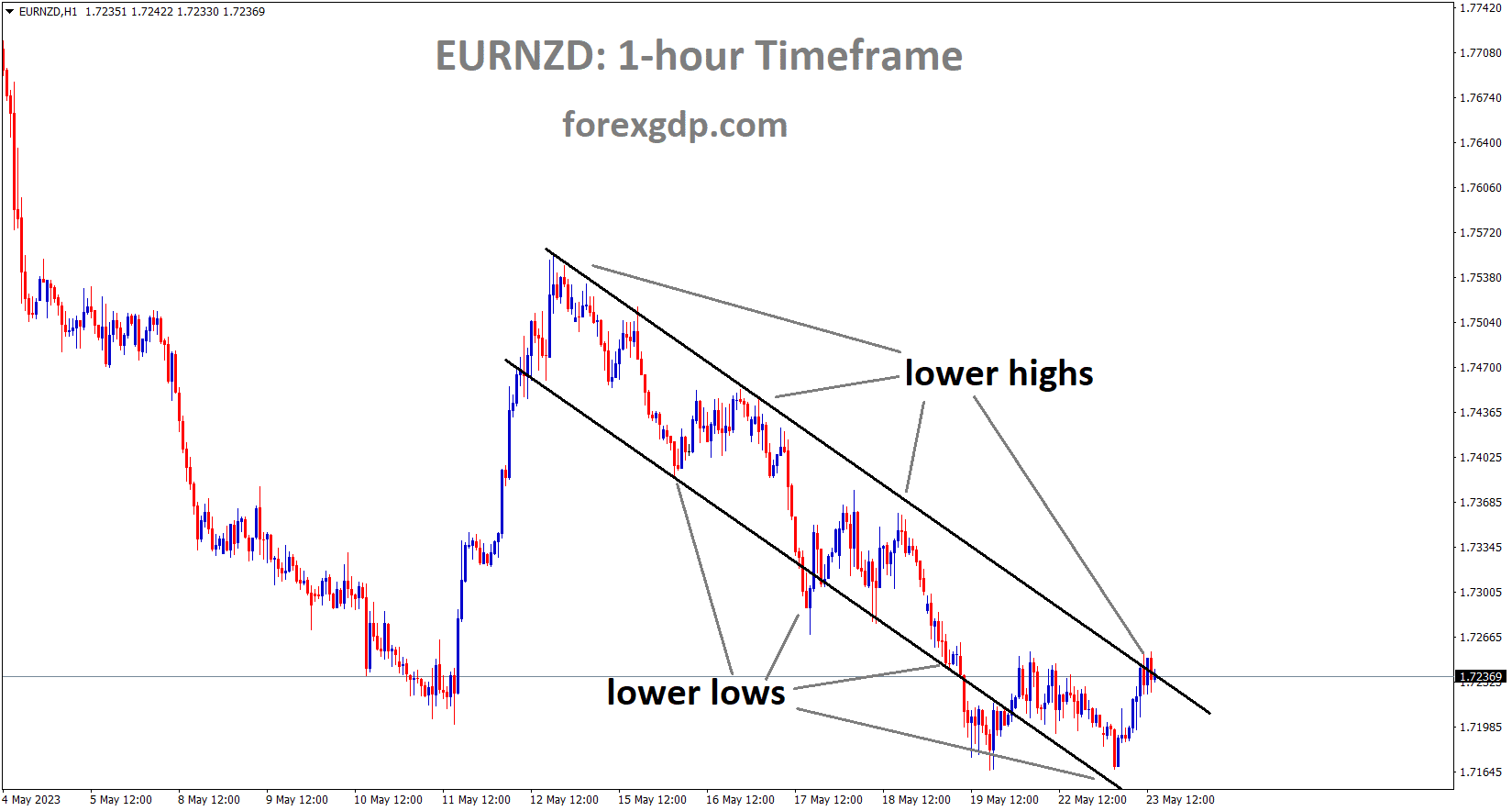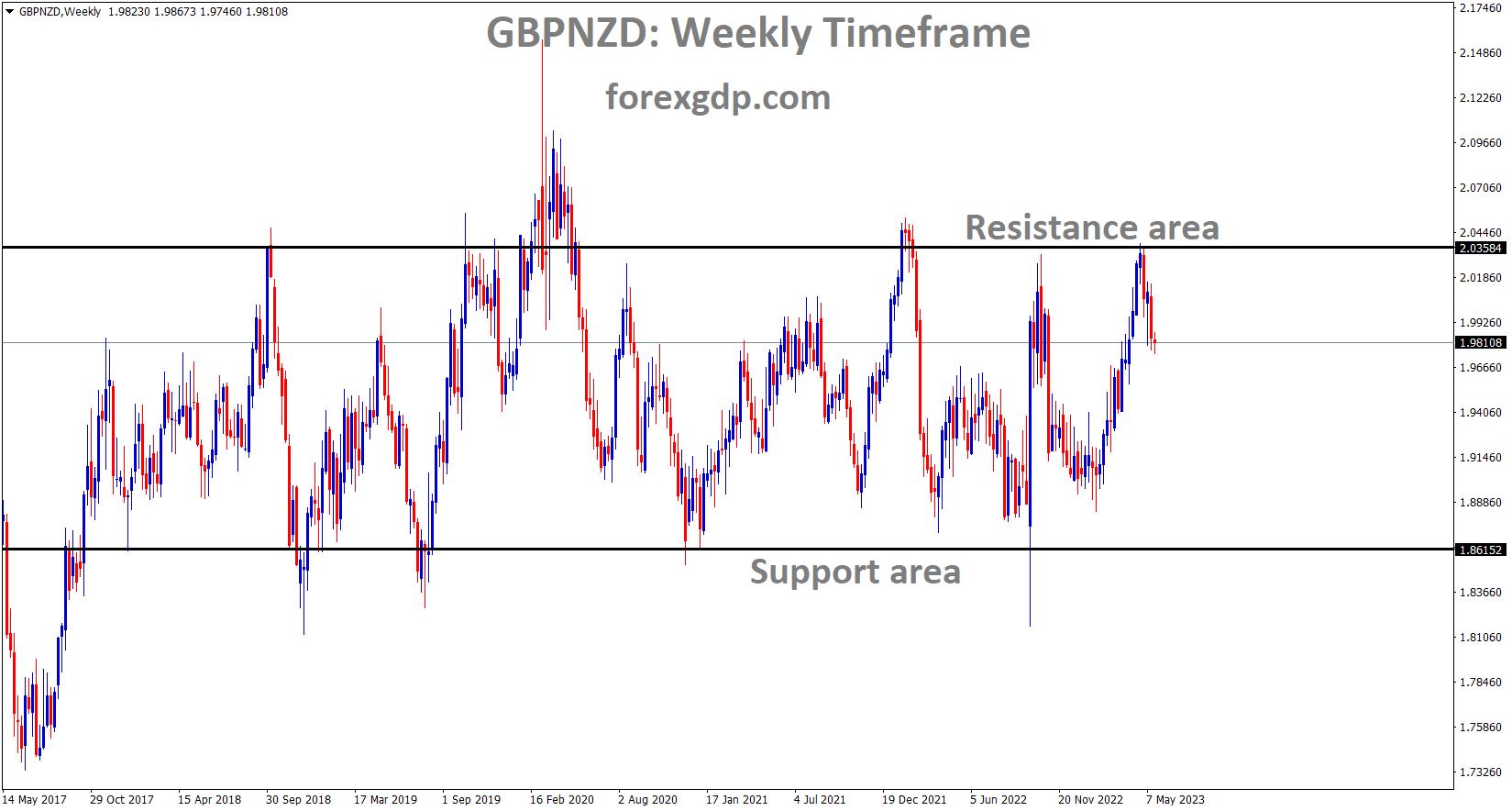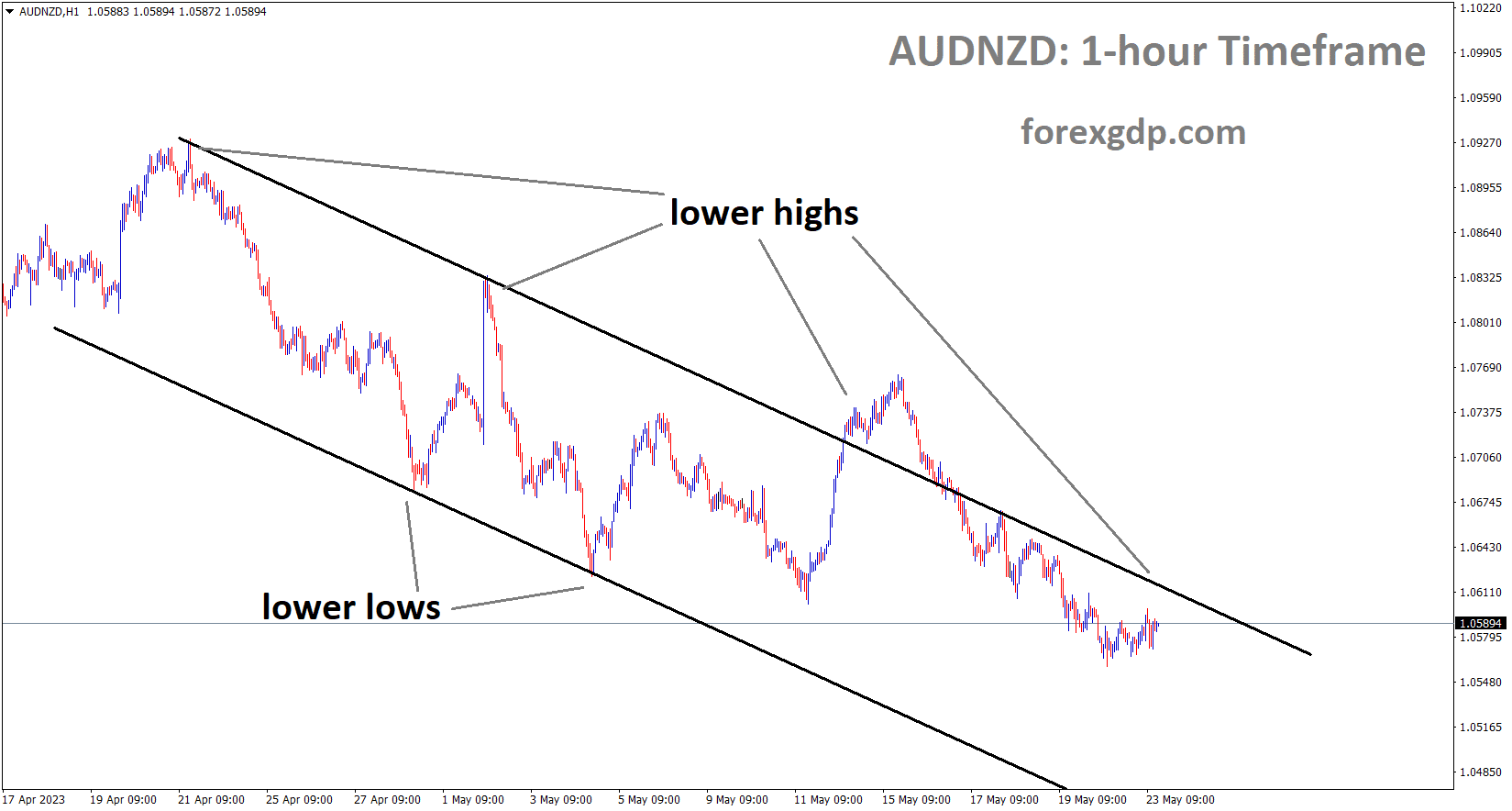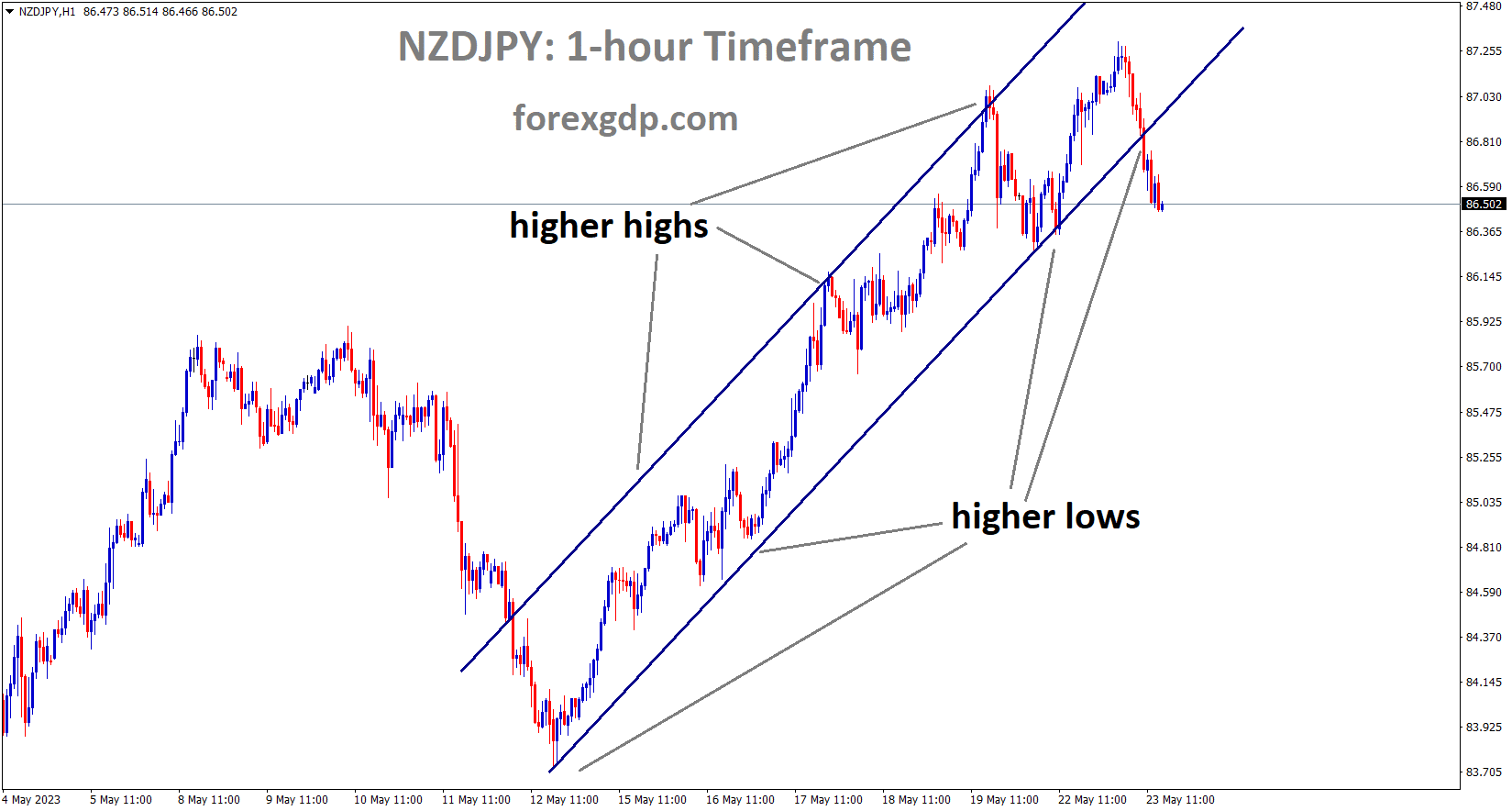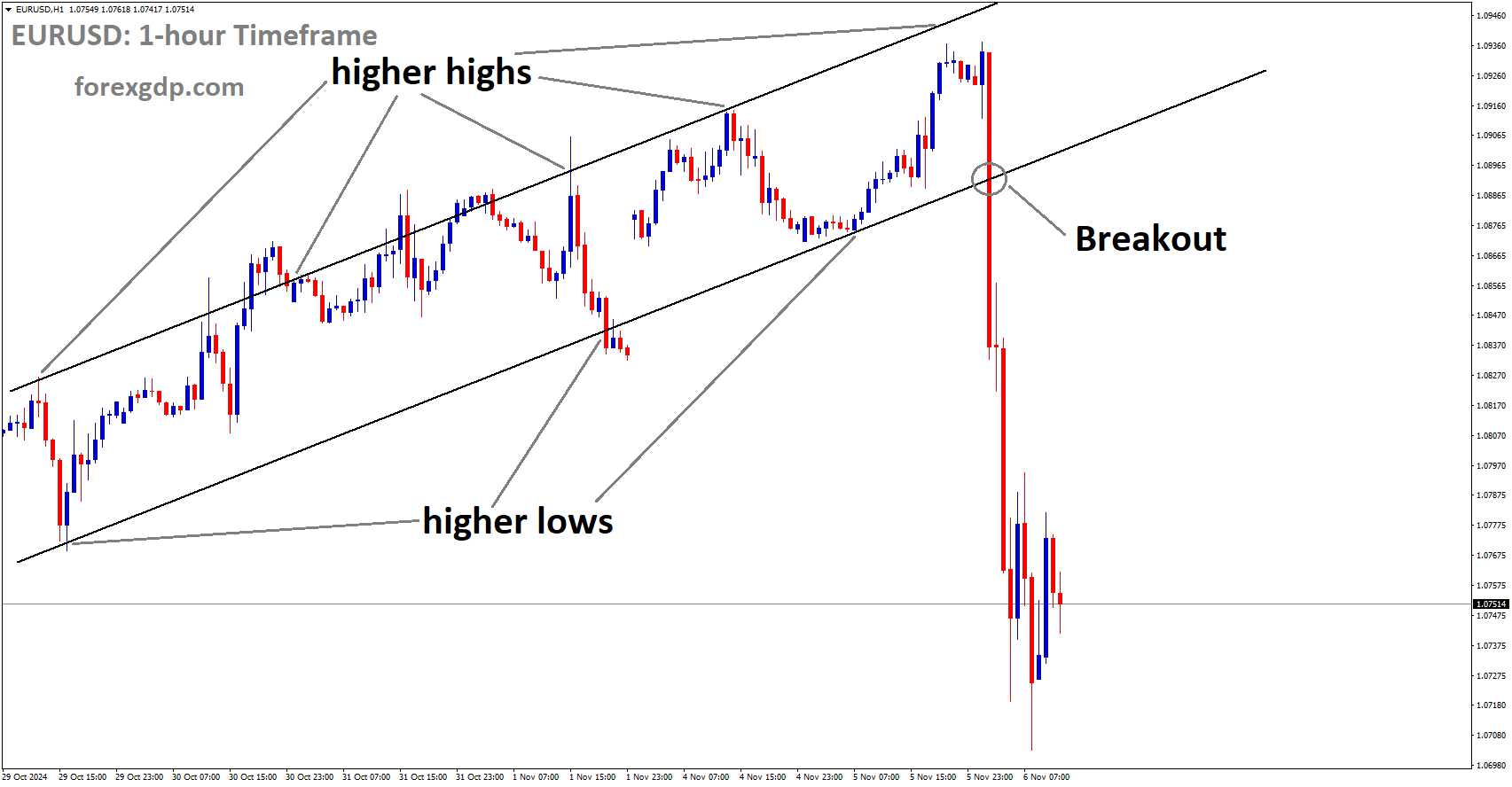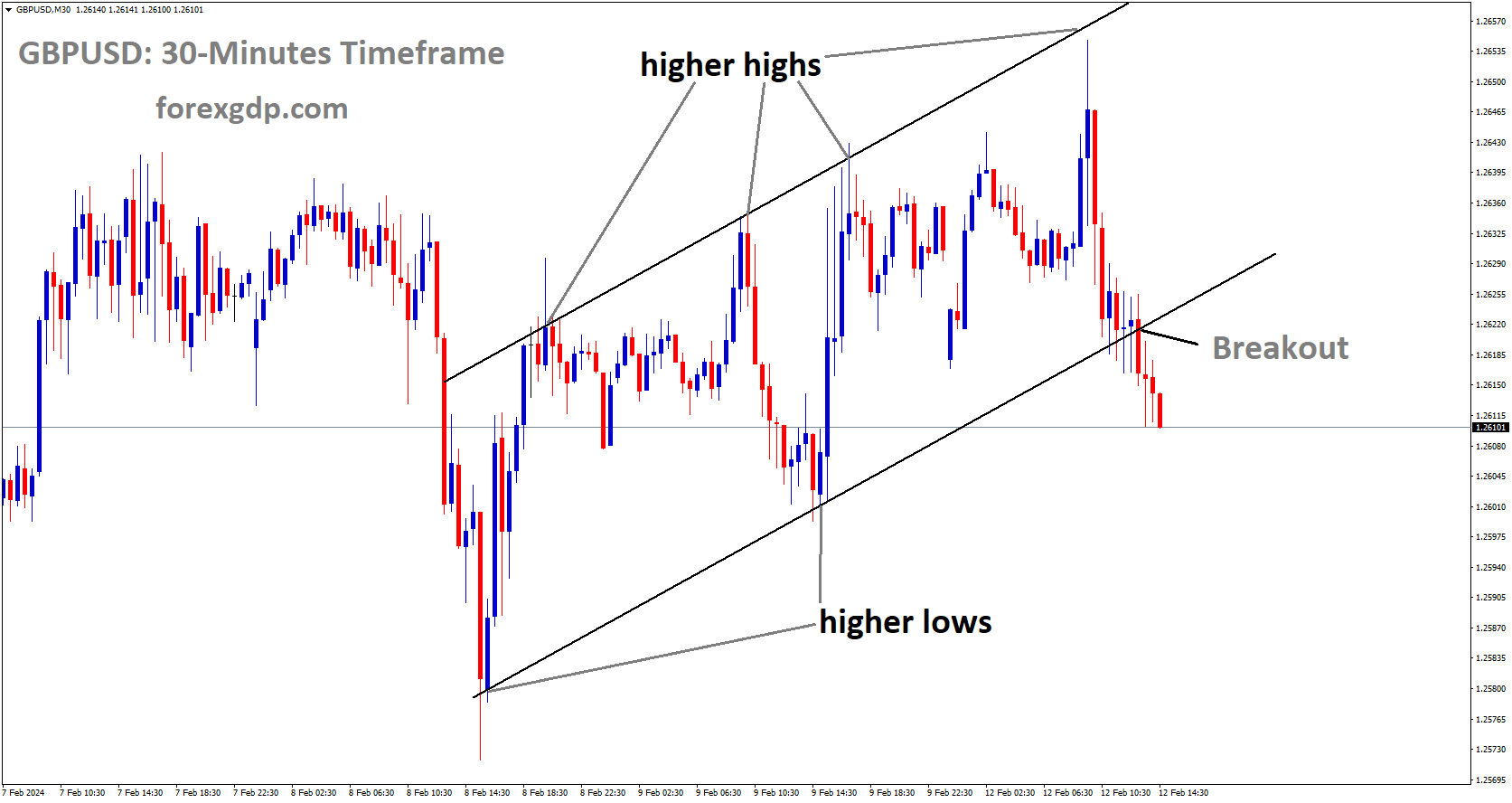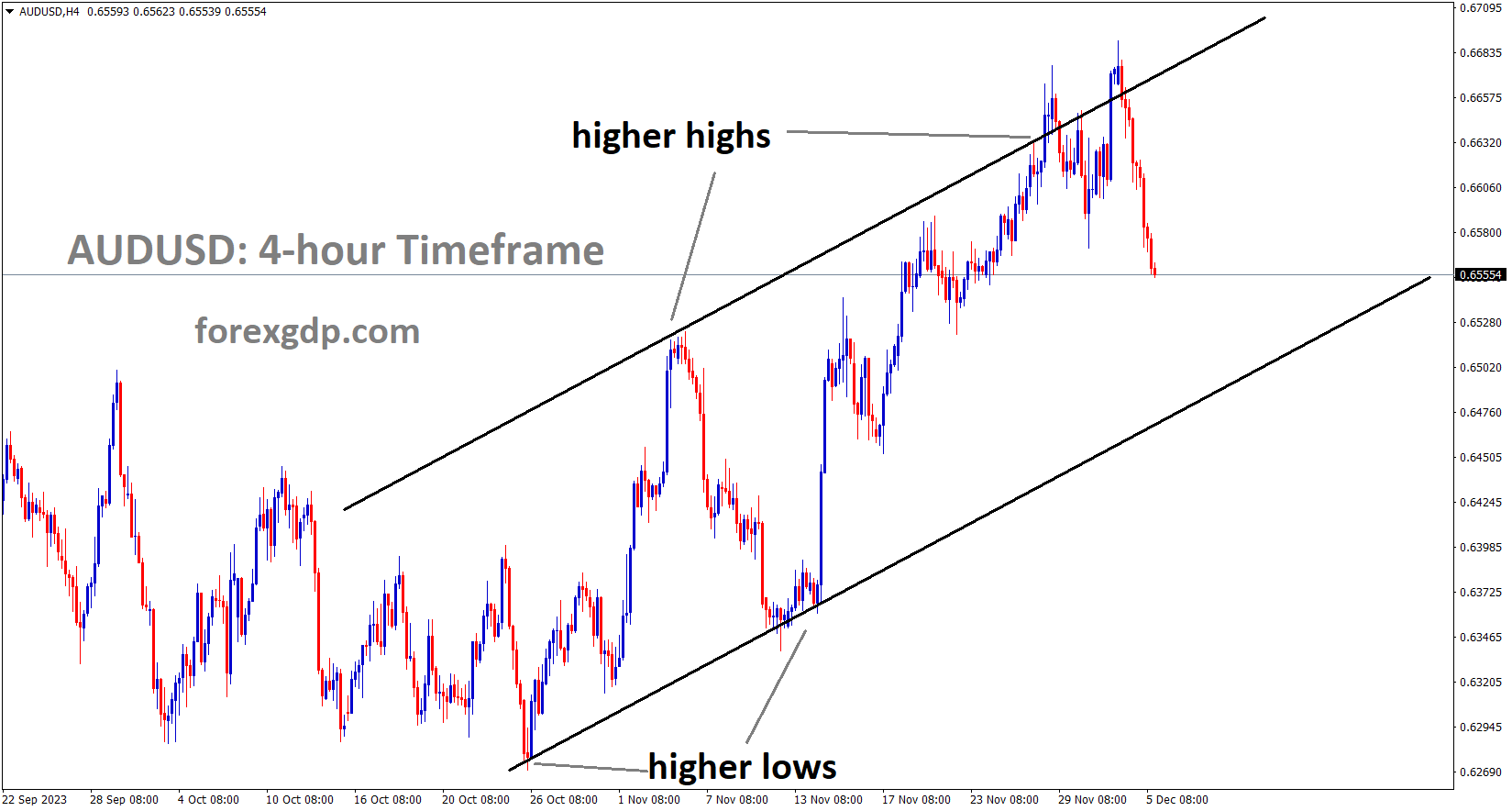NZDUSD has broken the box pattern in downside.
The anticipated 25 basis points rate increase by the Reserve Bank of New Zealand in this meeting is driven by the increased inflationary pressures within the New Zealand economy. It is hoped that this measure will address the rising inflation. However, if inflation fails to moderate, there may be further rate hikes in the next meeting. Over the past year, there have been significant challenges such as weakened consumer spending, reduced profitability for businesses, and decreased government tax revenue, all of which can be attributed to previous rate hikes.
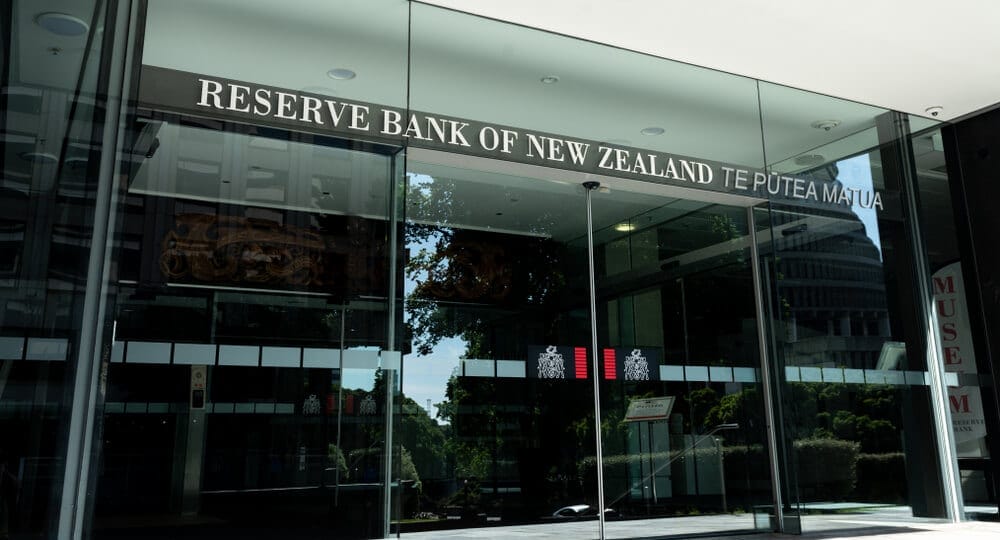
The New Zealand Institute of Economic Research has reported that the Shadow Board is divided on whether the Reserve Bank should increase the Official Cash Rate in the upcoming May Monetary Policy Statement. The decision is eagerly awaited by traders and will be announced in the Reserve Bank of New Zealand’s monetary policy meeting. This article explores the differing views within the Shadow Board regarding the OCR increase and provides insights into the economic outlook for the coming year.
Views on OCR Increase:
A majority of Shadow Board members believe that a 25 basis points increase in the OCR to 5.50 percent is warranted. They argue that domestic inflation pressures remain high, and there is an upside risk to inflation due to weather events earlier in the year. However, the rest of the Shadow Board recommends keeping the OCR at 5.25 percent. This division reflects varying concerns about the economic outlook among the Shadow Board members.
Divergence in Views on Future OCR:
In addition to the OCR increase for the current period, there is also a divergence of opinions within the Shadow Board regarding the OCR’s position in twelve months. The differing views reflect the members’ varying concerns about the economic outlook for the coming year.
EURNZD is moving in the Descending channel and the market has reached the lower high area of the channel
Recent developments, such as weaker government tax revenue, declining consumer spending, and reduced business profitability, suggest a slowdown in the New Zealand economy. Two members highlight the potential upside risk to inflation from rising net migration inflows and potential fiscal stimulus in the new budget, which the Reserve Bank needs to monitor closely.
Expectations from Various Economists:
The past week has witnessed significant activity among economists, particularly in relation to interest rates. ASB economists describe it as a “wild week” where wholesale interest rates surged due to concerns about migration numbers and the budget’s impact. Different major bank economists have revised their projections for the OCR peak, with Westpac now expecting a 6% peak.
ANZ economists project a peak OCR of 5.75%, while ASB economists go further, anticipating a 50 basis points increase this week and the possibility of more hikes later. BNZ economists maintain their expectation of a 25 point rise this week but believe the Reserve Bank will leave options open for future increases.
Market Response and Predictions:
The wholesale interest rate markets have experienced significant fluctuations amid these economist projections. The 90-day bank bill rate has risen from 5.57% to 5.82% in a week, while two-year swap rates have increased from 4.9% to 5.49%.
GBPNZD is moving in the Box pattern and the market has fallen from the resistance area of the pattern.
The market is now pricing in a peak OCR of 5.87% by midyear. ASB economists suggest that the recent budget poses a challenge for the Reserve Bank’s decision-making process and expect a 50 basis points increase to 5.75% in May, with the possibility of further hikes.
Migration and Inflation Considerations:
The ASB economists highlight the significance of the Reserve Bank’s perception of migration’s influence on inflation. While migration has traditionally been viewed as inflationary, they question whether this assumption holds in the current circumstances.
They argue that labor shortages have driven wages up while employment is cooling, which may impact inflation differently. However, the Reserve Bank may not be willing to take chances and may consider the historical perspective in its decision-making process.
Views on OCR Hike and Forward Guidance:
Kiwibank economists caution against the Reserve Bank going too high with the OCR and expect another hike this week. They emphasize the importance of forward guidance, as the timing and extent of rate changes are crucial. They believe that while the OCR may reach 5.5%, it is too early for the Reserve Bank to conclude that it is the peak for this cycle.
AUDNZD is moving in the Descending channel and the market has fallen from the lower high area of the channel
The impact of monetary policy has long lags, and they express concerns about potential overhiking by the Reserve Bank.
BNZ’s Perspective on Migration and Fiscal Impact:
BNZ’s head of research questions the prevailing thinking about rising net migration and its impact on the economy. He argues that migration not only increases demand but also substantially increases supply. Labor market indicators suggest an increase in labor supply, which has made hiring easier.
He also questions the extent of the fiscal impact, suggesting that the Reserve Bank may have already factored in anticipated fiscal easing when making its previous decisions.
Conclusion:
The upcoming decision on the OCR by the Reserve Bank of New Zealand is eagerly anticipated by traders and economists alike.
NZDJPY is moving in an Ascending channel and the market has reached the higher low area of the channel
The Shadow Board’s divided views, the fluctuations in interest rates, and the ongoing debate about migration and fiscal impacts contribute to the uncertainty surrounding the decision. The forward guidance provided by the Reserve Bank will be crucial in determining the future trajectory of interest rates.
Don’t trade all the time, trade forex only at the confirmed trade setups.
Get Live Free Signals now: forexgdp.com/forex-signals/

